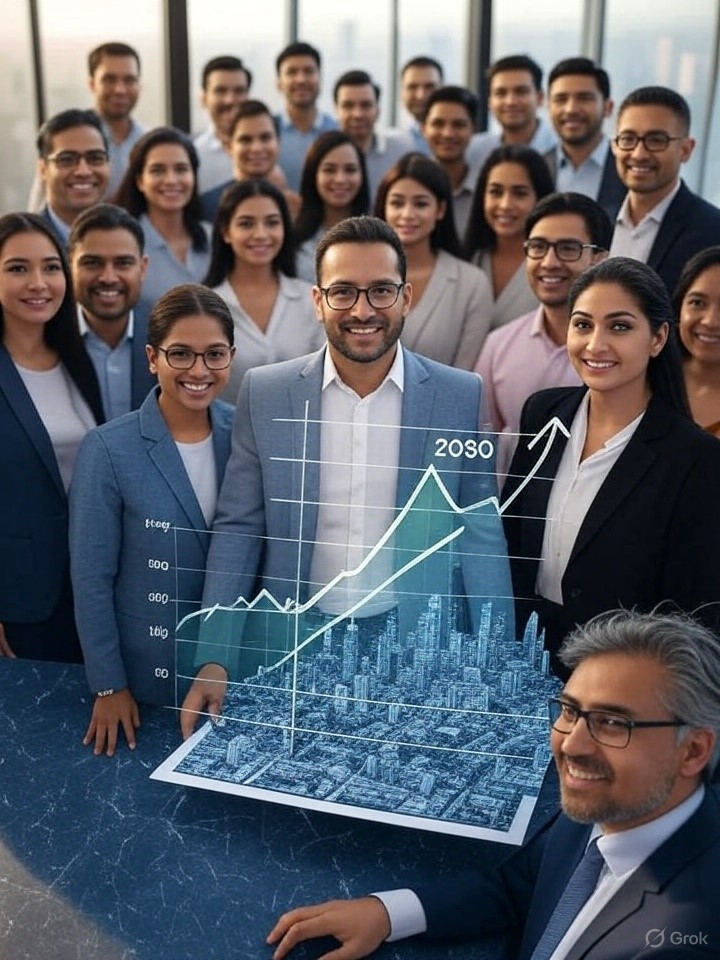India has officially crossed the $4 trillion GDP mark, a significant milestone in its economic journey. This landmark achievement not only demonstrates the resilience of the Indian economy but also paves the way for an ambitious push toward becoming a $7 trillion economy by 2030, as envisioned by policymakers. As we step into the second half of the decade, it’s essential to look at what enabled this growth, the sectors driving it, and what the next five years may hold.
Strong Foundation: Political Stability and Economic Policy
One of the strongest pillars of India’s current economic momentum is political stability. A democratically elected government with a clear majority has enabled consistent policy implementation, reforms, and long-term infrastructure planning. With the recent 2024 general elections reinforcing the current regime, investor sentiment remains positive, both domestically and internationally.
Government-led initiatives like Make in India, Digital India, and PLI (Production-Linked Incentives) schemes have begun showing tangible results. The focus on capital expenditure, highways, ports, digital infrastructure, and renewable energy have created multiplier effects across the economy.
India’s economic expansion has been broad-based, with high growth in sectors like IT services, pharmaceuticals, digital payments, fintech, manufacturing, and real estate. According to World Bank data, India’s GDP has grown steadily post-COVID, and it now ranks among the top five economies in the world by size.
Key Drivers for the Next 5 Years
Over the next five years, India’s growth trajectory will be driven by five main factors:
- Demographics and Consumption: With a median age of just 28, India has a youthful population that drives demand, innovation, and a growing middle class. The consumption story is just beginning.
- Digital Economy: IndiaStack, UPI, and digital inclusion have created an efficient digital backbone. With 850+ million internet users, the digital economy is expected to contribute $1 trillion by 2030.
- Manufacturing and Exports: The push toward “China +1” in global supply chains has made India an attractive destination for global manufacturers. The PLI scheme is helping India become a hub for semiconductors, electronics, and green tech.
- Infrastructure and Real Estate: Urban expansion and housing demand, along with logistics parks, smart cities, and transportation projects, are catalyzing job creation and economic growth.
- Green Energy Transition: With the goal to reach net zero by 2070, India is investing heavily in solar, wind, green hydrogen, and EVs. This will create new jobs, startups, and export opportunities.
According to a Morgan Stanley report, India is well-positioned to become the third-largest economy by 2027, and could touch $7 trillion in GDP by 2030, assuming 6.5%–7% annual growth.
Challenges to Navigate
Despite the optimism, challenges remain: unemployment among educated youth, income inequality, rising NPAs in certain sectors, and geopolitical risks with neighbors like China. But with stable leadership and reform-oriented governance, these risks can be managed effectively.
India will also need to upskill its workforce, digitize MSMEs, and ensure inclusive growth to sustain momentum and avoid falling into the middle-income trap.
Final Thoughts
Crossing the $4 trillion milestone is a moment of national pride, but it is also a call to action. The next five years will determine whether India simply grows or transforms itself into a sustainable, inclusive, and innovation-led economy.
The journey to a $7 trillion economy by 2030 is possible—and perhaps inevitable—if current reforms are sustained and newer challenges are addressed proactively. For investors, entrepreneurs, and citizens alike, this is India’s decade.
🏷️ Tags:
India Economy, GDP 2025, India 2030, Stock Market, Digital India, Investment, Macro Trends, Infrastructure, Wealth Building, Policy Reform
📘 Disclaimer:
The content in this blog is for informational purposes only and reflects the author’s personal views based on publicly available data. It should not be construed as investment, financial, or political advice. Please consult a qualified professional before making any financial decisions.
